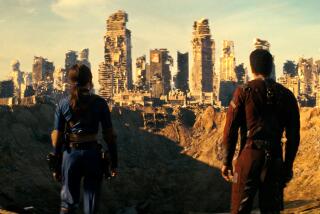Nervous filmmakers head for placid Hawaii
- Share via
HONOLULU — In the beginning, Hawaii was Hawaii. Think Burt Lancaster and Deborah Kerr on a deserted beach in 1953’s “From Here to Eternity,” or a surfboard-straddling Elvis Presley in 1961’s “Blue Hawaii.”
These days, though, this Pacific paradise is used less often for classic island images of breeze-tickled palms and gem-blue waves lapping a pristine beach. Instead, it’s posing as a wide range of locales, from Nigeria and the Congo to Brazil and Venezuela.
Since Sept. 11, film and TV casts and crews have increasingly avoided foreign locations perceived as dangerous.
“Every month, people become more reluctant to go to more exotic, less secure places,” said Bill Bowling, a veteran Hollywood location manager who has scouted in Hawaii. “Hawaii is situated just extremely well right now.”
Hawaii also is more convenient to Hollywood. And for the island itself, playing various roles is good business.
“Hawaii -- for it to be a player in this business -- has to represent itself as more than just Hawaii,” said Chris Lee, a former studio executive and producer who is overseeing a new University of Hawaii program that includes film and digital arts. “If you said we’re only going to be Hawaii, it’s very limiting.”
Since the beginning of film, moviegoers have seen Hawaii act as an impostor, from 1958’s “South Pacific,” in which Hawaii posed as an unnamed Pacific island, to 2000’s “Jurassic Park III,” which cast the state as Costa Rica.
Last year alone, the islands saw the filming of “Tears of the Sun,” the Bruce Willis flick set in Nigeria; “Die Another Day,” the James Bond film set off Korea; and “Welcome to the Jungle,” the forthcoming movie with the Rock starring as a bounty hunter in Brazil’s Amazon.
Films generated an estimated $135 million for Hawaii’s economy last year.
The islands have also played Tahiti (“Six Days/Seven Nights”), New Guinea (“Krippendorf’s Tribe”) and Venezuela (“Dragonfly”), among other places.
Hawaii still faces stiff competition from other locales, including Australia, New Zealand, Canada, Fiji and the Bahamas. Those places can sometimes offer similar settings, security and better financial incentives. But they can’t always duplicate the convenience.
The distance of the islands from Los Angeles means a weekend at home is not out of the question. And the small size of the islands means the commute time between accommodations and sets is relatively short.
More to Read
Only good movies
Get the Indie Focus newsletter, Mark Olsen's weekly guide to the world of cinema.
You may occasionally receive promotional content from the Los Angeles Times.










